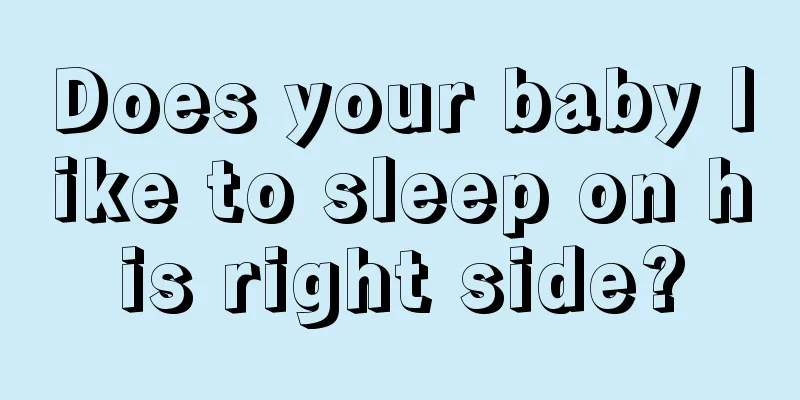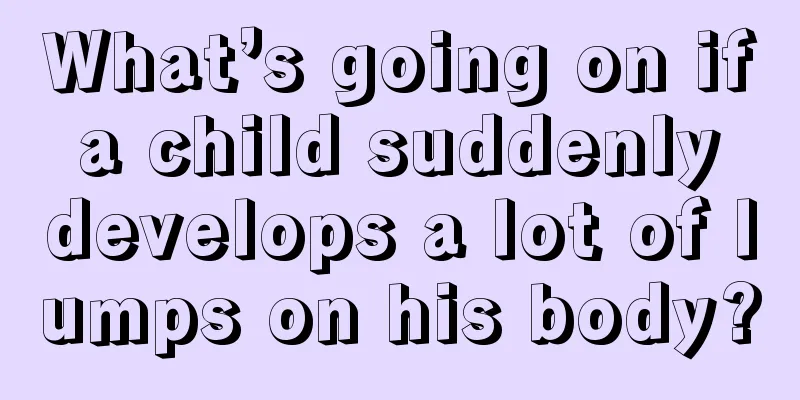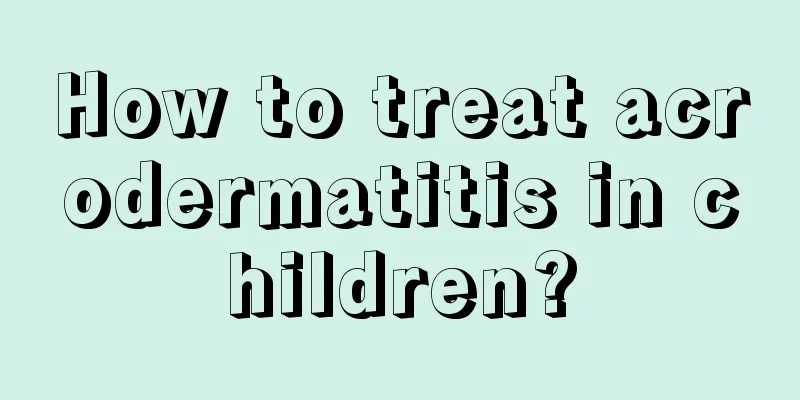Does your baby like to sleep on his right side?

|
Some parents find that their babies like to sleep on their right side. In fact, babies like various sleeping positions. As long as they find a position that makes them comfortable, it is normal to like this sleeping position. Parents just need to pay attention to their children's sleeping position so that it is not strange. Sleeping on the right side is also feasible. We adults also like to sleep in different postures, let alone newborn babies. Newborns just can't express themselves with words, so mothers need to observe carefully and help their children. When sleeping, help your baby turn over and let him adapt to this new world by using different sleeping positions. After the baby can sleep on the right side, let the baby lie flat again. Be careful not to let the baby lie flat to feed. When appropriate, let the baby sleep with his body tilted to the left. For children under 1 year old, it is recommended that parents help their children change their sleeping positions regularly so that they can develop a sleeping position that is suitable for them. Parents must pay more attention to it. Advantages of sleeping on your back: It is convenient for adults to observe the baby's expression, the internal organs are under less pressure, the limbs can move freely, and according to the results of medical research, sleeping on the back can reduce the incidence of sudden infant death syndrome. Disadvantages of sleeping on your back: (1) When a newborn baby sleeps on his back, his muscles cannot be completely relaxed. If the baby's arms are placed on his chest accidentally for a long time, it will cause breathing difficulties and blood circulation obstruction. (2) It will also make the newborn lack a sense of "security", causing the newborn to fall asleep uneasily. It will also make the occipital region appear flat, the face rounder, the front-to-back diameter of the head smaller, and the left-right diameter larger. (3) When the baby lies on his back, the relaxed tongue root may fall back, sometimes blocking the airway and making it difficult for the baby to breathe. Especially for babies who have the habit of regurgitating milk, there is a risk of suffocation. At this time, their bodies are more fragile and they are prone to catching cold. Advantages of prone position: (1) When the baby lies on his stomach, his chest presses against the bed, which in turn gives him a reaction force that can massage his thorax, increase his lung capacity, and promote the development and maturation of his respiratory system. This sleeping position can also increase the activity of the baby's head, neck and limbs, and promote the function of organs such as the heart and lungs. (2) According to the research results of psychological development, when the baby sleeps on his stomach, his limbs and entire body have a mattress to rely on when there is external stimulation, so that he can fall asleep peacefully without being frightened. When he grows up, his psychological quality is relatively stable. (3) Sleeping prone is also beneficial to the digestion of food in the stomach, reducing the reflux of food into the trachea, and at the same time it is beneficial for air to enter the lungs, keeping the respiratory tract unobstructed, and reducing the occurrence of bronchial pneumonia. Disadvantages of prone position: (1) It is difficult for parents to observe the baby’s face and expressions, which makes it difficult for the baby to swallow saliva, causing saliva to flow out. (2) The baby’s mouth and nose can easily be blocked by external objects such as bedding, causing breathing difficulties and the risk of suffocation. Moreover, it is inconvenient for the baby to move his limbs. (3) When a child sleeps on his or her stomach, the pillow will press against the upper and lower jaws. If this continues for a long time, it will cause abnormal jaw development, resulting in a flat face. The face will not be on the same horizontal line, with the upper front teeth either outside the lower front teeth or inside the lower front teeth. Viewed from the side, the face is not full but sunken. |
<<: What to do if a two-year-old baby has phlegm but can't cough it up
>>: The latest treatment for adolescent uterine bleeding
Recommend
What are the symptoms of hand, foot and mouth disease in children?
Children are active and naughty, and have a stron...
Baby has a small hole in the ear
I believe many families have noticed the phenomen...
How long is the sun exposure good for jaundice?
Neonatal jaundice is a very common condition. Aft...
What should children eat if they are deficient in vitamins?
Vitamins are an indispensable trace organic subst...
What are the treatments for stuttering?
Many parents are shocked and nervous when they fi...
How to treat children's tooth decay
It is very common for children to have cavities. ...
What to do if your baby has blisters on his palms
The most likely cause of blisters on the baby'...
What tests are needed for children with ADHD?
When it comes to ADHD, many parents think that it...
What is the reason for the newborn's crooked mouth?
All parents hope that their children can grow up ...
Why are children's palms yellow?
The palms of a normal person are light yellow. If...
What to do if your three-year-old baby has a bleeding nose
When the climate is relatively dry, many parents ...
Can a 15 month old baby eat yogurt?
A 15-month-old baby is just over one year old. At...
How to treat viral herpes in children?
Herpes is caused by infection with the herpes vir...
What to do if your child is thin and short
Diet is related to children's physical health...
Apply ginger slices to the soles of the baby's feet when the baby has a fever
If a baby has a fever, it is often the parents wh...









